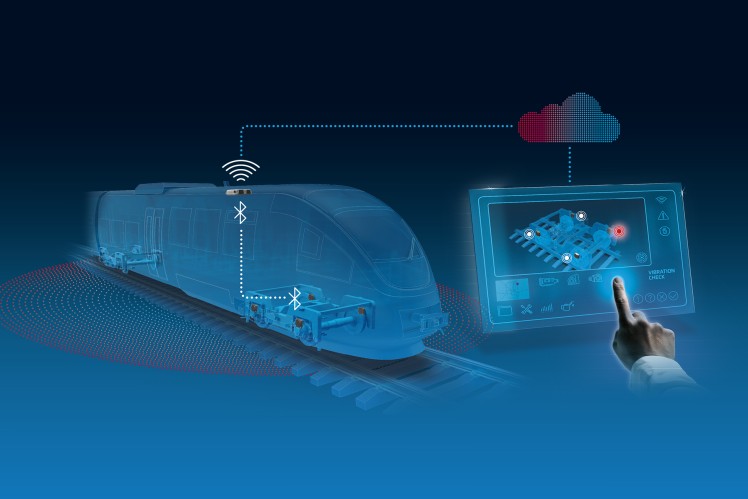

Digital Solutions for the Future of Mobility on Rails
connect@rail - The condition monitoring platform for rail vehicles
On track towards the future
Mobility is a necessity of human and modern-day society that has so far placed a heavy burden on our climate. The passenger car remains the commuter’s preferred choice, both for business and private travel. But rising emission, a lack of parking space and traffic jams call for sustainable alternatives. People everywhere expect future-proof mobility that is electric, intelligent, connected, sustainable, safe, and last but not least affordable. Rail is a much lower-emission mode of transport than, for example, air travel or the car. If rail transport is going to play a greater role in society's mobility mix, trains need to withstand peak periods and faster cycle rates and become more efficient to operate. Service interruptions also need to be eliminated and reliability in rail transportation needs to increase.
The intelligent combination of mechanics, electronics and digital technologies
We develop and produce intelligent, sustainable solutions for rail vehicles for the complex requirements of modern mobility. The next generation of driveline, chassis, and safety systems, expanded by intelligent connectivity solutions, provides more performance and cost-effectiveness. Together with our partners, we shape the innovative rail path into the future of mobility.
Product Portfolio
Comprehensive condition monitoring for rail vehicles with connect@rail
connect@rail combines digital know-how and intelligent connectivity solutions for rail transport. With our innovative solutions, monitoring systems, and digital services, we support rail operators in permanent monitoring, early maintenance planning and predictive maintenance of their fleets. Thus, efficiency, reliability and safety in rail transportation can be further increased thanks to integrated sensors and advanced data analysis tools.
The Infrastructure and Driveline Monitoring for predictive maintenance planning and the Smart Identification for an efficient fleet management are part of the innovative condition monitoring system connect@rail.



